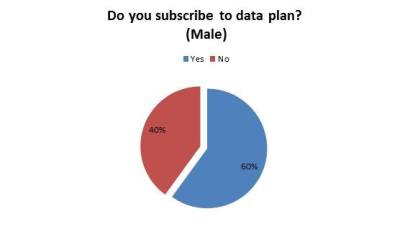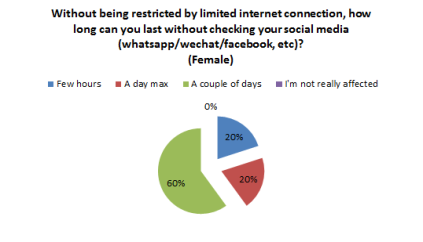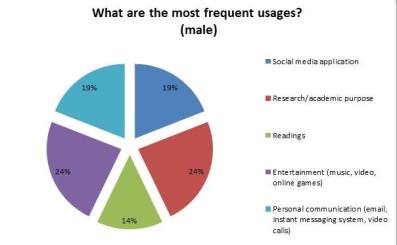 Internet holds a large number of human population which is rapidly growing every second. Do you know that up till this second that this post is written, there are currently:
Internet holds a large number of human population which is rapidly growing every second. Do you know that up till this second that this post is written, there are currently:
3,091005,381 internet users around the world
919,802,358 total number of websites
46,380,258,864 emails sent today
900,985,701 Google searches today
Click here to watch the population grows
With these numbers of population– we can even build up an empire! The introduction of internet as the advanced ICTs has turned the world into a global village and posses economic growth prospect (Acilar, 2011). No wonder people uses internet as their business platform and advertisement nowadays. According to Acilar (2011), the information and communication technologies (ICTs) have gone through rapid development over the past few decades and have always been part of the aspect that changes the lifestyle and socialization of the world’s populations.

While the telecommunications infrastructure has grown and ICT has become less expensive and more accessible, today more than ever, the invisible line that separates rich from poor, men from women and the educated from the Aspects of Digital Divide in a Developing Country illiterate; also separates the connected from the disconnected (Zaidi as cited in Acilar, 2011).
Although telecommunication through the new media is tailored to be less expensive and more convenient to most, there in unfortunately significant differences and ability to access and use the ICTs which is translated differently in different continents. Digital divide is usually categorized as gender divide, age divide and income divide (Acilar, 2011).
In an attempt to understand probability of ‘digital divide’, a mini survey was conducted between a group of our classmates TheAgeofGeeks group and our group. We have chosen a group of our classmates (consisting of 5 male) and hand out questionnaires in order to understand their pattern of behavior and average usage/consumption of the new media. It is then compared with our own group (consisting of 5 female). Both the male and female groups consist of students around the age of 22 and 23 years old. Due to the coincidence of the division between gender among the groups, we will just mostly the term male and female group as a reference in our discussion.
When asked about the amount of gadgets owned and the relation with age, 100% of the 23 years old students own 3 devices while 90% of the 22 year old students have 3 gadgets and the remaining one has 4 devices.


How early can one possibly own a Smartphone? We found out one of our respondents had his first Smartphone since primary school. While majority had it since form 1-3 and the rest during form 4-6.
Which device(s) do students need and uses the most? 4 out of 5 male or 90% of the male respondents stated smartphone as the device used most often. Only 1 of the male respondents stated laptop as most used device because as a student, he needs it most of the time to do assignments. On the other hand, all female respondents agreed on having smartphones as their most used device. So what do they use it for? Overall, 9 out of 10 respondents uses their phone to watch movies, personal use such as email, to surf the internet and also to keep in touch and communicate with people. They also mentioned that they prefer to use their phone the most because it is more convenient as it is easy to carry around. Thus this leads to another psychological impact on the overly-attached phone users.
Have you heard of Nomophobia?
Some of you might have not heard of it but do not be surprised that most of us have actually seen it or some might have experienced it themselves. Nomophobia is actually an abbreviation of “no–mobile-phone phobia” which explains the anxiety of living without mobile device or having no access of phone contact especially when it ran out of battery or credit or without network coverage (Elmore, 2014). Sounds familiar? According to Huffpost, this is indeed caused rapid fear in today’s world and this problem is rising among the high school and college students to which it is reported that college students now shower with their mobile device! (Elmore, 2014).


According to Yzer & Southwell (2008), people have always regarded the internet as the synonym of new media. Hence by this aspect, Smartphone with the availability of internet on the go, the “new” in new media refer to the opportunities of functional meetings for groups to exchange ideas. As shown by the graphs above, 100% of the female respondents subscribe to data plan whereas only 60% of the male have data plan.


With these data, we could also say that the female respondents surf the internet everyday as they have easy access on internet especially which therefore explains 100% of the female respondents uses internet everyday while only 80% of the male respondents is on the internet everyday. The remaining 20% is male respondents only uses the internet when needed. Perhaps due to their dependency on limited access to available wifi.
On the other hand, discussion on mobile attachment is usually linked with the younger age particularly students. Huffpost reports that high number of college students actually sleep with or next to their phones. Based on the survey we conducted, majority of our respondents which amounts to 44.4%, stated that they can last for a couple of days without checking their social media accounts such as Twitter and Facebook. Three out of four respondents who chose this answer belongs to our group while the two members of other group mostly stated that they are not affected. Meanwhile, 22.2% of our respondents comprised of both groups stated that they can last for a day without their social media accounts while only 11.1% which equates to a member who belongs to our group stated that she can only last for a few hours without scrolling her newsfeed on her social media accounts. From this statistics, we can say that social media does not play a major part in our respondent’s lives. This is because only a small number of our respondents regularly check their social media accounts despite being in the era where smartphones ruled and Wi-Fi connections are available everywhere.
Hupfer and Detlor (2006) as well as Garbarino and Strahilevitz (2004) came to agreement that Internet is comprehend by female users as a tool to maintain social values as compared to man (as cited in Thanuskodi, 2013). 44.4% of male respondents stated that they update their status on their social media accounts whenever there is something interesting to share while 33.3% saying it depend on their mood to update. There is also 22.2% of male respondents who said that they never updated their status. This could be they do not own any social media account or maybe they do not actively using it hence the lack of updates. On the other hand, three female respondents (members from our group) chose to update when there is something interesting to share compared to only one male respondent who chose the same answer. Meanwhile, two out of three female respondents chose to update their social media accounts according to their mood while both members who never update their social media accounts are male respondents. We can conclude that gender-wise, it can be said that males do not appear to care about updating their status regularly compared to females. This is most probably because they do not feel the need to share about themselves on the internet or even spend time thinking about their next update.
Based on our data all of our respondents use the internet for research and academic purposes. This is not unusual considering our survey was conducted among students. Therefore, it is inevitable for us, students to use the internet for information to do our assignments. Meanwhile, about 88.9% of our respondents stated they use the internet for entertainment and social media application. Five members from our groups chose to use the internet for the social media and the other three are from the other group while both group have the same amount of members which is four members when it comes to using the internet for entertainment. The high percentage for this is probably because of this survey is conducted among youth in the early 20s so it is common for them to use the internet for those particular reasons. Next is the usage for personal communication such as e-mail and instant messaging system where according to our survey about 77.8% of our respondents which equates to seven members chose to use the internet for this purpose. Among the seven members, four is from our group while the other three is from the other group. There is only a slight difference among these two groups which prompt us to conclude that both of the groups use the internet for personal communication quite regularly. The least usage for the internet based on our survey is for reading. Our survey recorded about 66.7% of our respondents who use the internet for reading which equates to a total of six members, three from each group. Now, this is not a small number considering the number of respondents we had, but the reason some of our respondents might not use the internet for reading is probably because they prefer to go to the library to get their reading materials hence the least percentage of usage.
Conclusion
Overall, the relation of ‘digital divide’ according to the mini survey, there is minimal differences present between the two groups. Perhaps the settings of our survey has no extreme differences as both groups are more less the same age, the same source of income (loans/scholarship/parents) and are all students. The comparison done between female and male internet consumption behavior in this mini survey does not necessarily cover the overall gender aspect. This survey is in fact not in any way enough to draw any drastic conclusion as it is only done among 10 students. It is only ample to serve as an example for the application of the probability of ‘digital divide’.
References
Acilar, A. (2011). Exploring the aspects of digital divide in a developing country. Issues in Informing Science and Information Technology Volume 8.
Elmore, T. (2014, August 26). Curing student of nomophobia. Huffpost. Retrieved from https//:m.huffpost.com/us/entry/5710427
Internet world stats: usage and population statistics. Retrieved from http://www.internetworldstats.com/stats.htm
Thanuskodi. S. (2013). Gender differences in internet usage among college students: a comparative study. Library Philosophy and Practice (e-journal)
Yzer, M. C., & Southwell, B. G. (2008). New communication technologies, old questions. American Behavioral Scientist.
P/s: Move cursor towards image for image source.
**You may also click on our respondent’s link on top as they have also conducted the survey and their findings are worth the read.









Nice info! The explanation were clear & easy to read. Good job.
LikeLiked by 1 person
thanks mimi 🙂 we’re humbled your kind feedback
LikeLike
I like the statistics!
LikeLike
love the statistics by the way. really informative.
LikeLiked by 1 person
glad you like it 🙂
LikeLike
“males do not appear to care about updating their status regularly compared to females.”
I can relate to that. good article 🙂
LikeLiked by 1 person
of course you do :p we’ve dedicated a link shoutout to your blog’s post as well coz your group’s findings are definitely worth the read 🙂
LikeLike